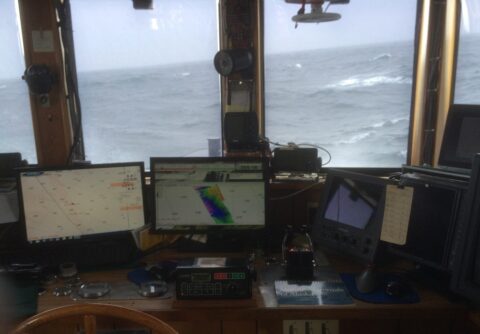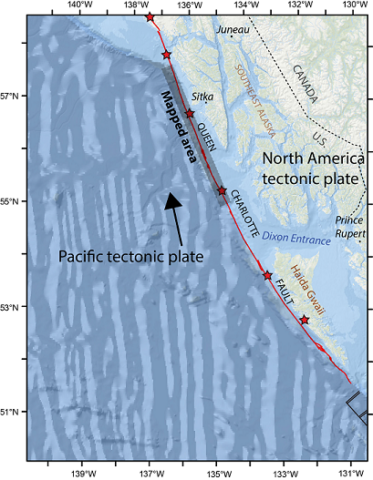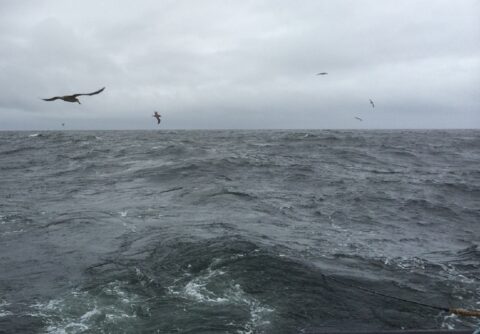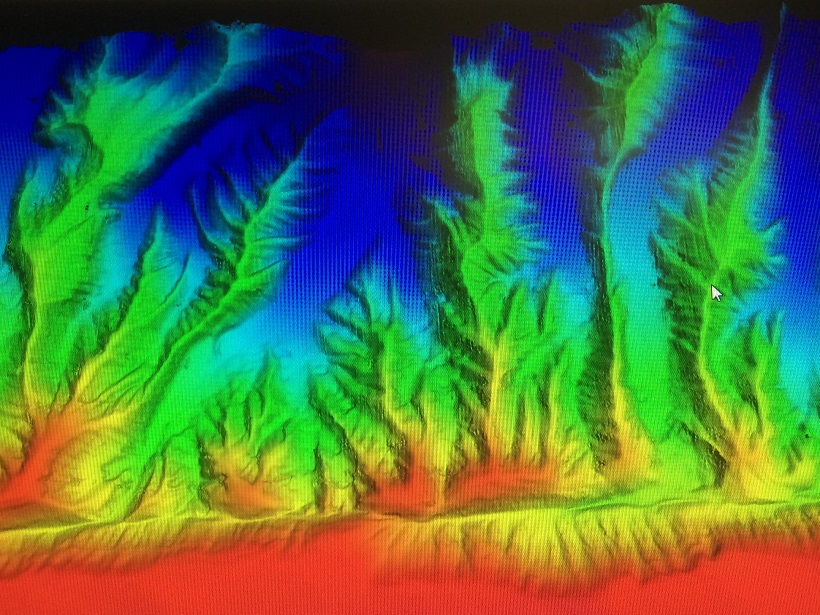This is one of a series of Editors’ Vox that discovers what else AGU journal editors do when they’re not reviewing manuscripts. Here, Uri ten Brink, Editor-in-Chief for JGR: Solid Earth, looks back on some recent fieldwork off the coast of Alaska.
Mesmerized by gracefully-gliding albatrosses, holding on for dear life as the boat violently rocks, engaging in late-night scientific discussions, and being free of internet tyranny, is how I spent three and half weeks last May and June doing field work.
The boat was the 106 foot (32 meter) long research vessel Medeia, a converted crab-fishing boat from the Gulf of Mexico, now operated by the Alaska Fish and Game Department. Persistently bad weather and small shared quarters meant that all 13 of us (5 crew and 8 scientists) had to get along or else … and we did get along very well, which added to the pleasure of conducting the field experiment.



The science we pursued was mapping the northern part of the Queen Charlotte Fault, a 900-kilometer-long fault stretching from southern Alaska to Vancouver Island, which constitutes the plate boundary between the Pacific and North American plates.
The dimensions of this plate boundary are very similar to the much better-known plate boundary farther south in California and the rate and sense of motion between the two plates is the same in both places, yet the observed deformation due to the relative plate motion is remarkably different.
In California, the deformation is distributed among many faults across the entire state. Off southeast Alaska, the deformation is largely concentrated on a single remarkably straight fault located at the shelf edge and upper slope.
That fault has experienced seven earthquakes greater than magnitude 7 in the past 90 years. The interactions between the fault and the extremely-high sediment influx during de-glaciations adds an interesting perspective to the study of this place.
During this USGS-funded survey, we mapped the seafloor along the fault and its surrounding area using two main devices deployed simultaneously.
A multibeam echosounder – the head of which was fitted on a customized hydraulic wing attached to the vessel – collected data which can map bathymetry (seafloor depth) and backscatter (an indicator of seafloor texture and composition).
Meanwhile, a high-resolution seismic-reflection system – consisting of a 32-channel hydrophone streamer and a sparker sound source towed on a cable behind the boat – collected seismic-reflection profiles (vertical images of sediment layers beneath the seafloor).
As data was coming in, it felt like nature was slowly turning a page in a book to reveal its secrets to us.


—Uri ten Brink, Editor-in-Chief, Journal of Geophysical Research: Solid Earth
Citation:
ten Brink, U. (2017), Mesmerized by gracefully gliding albatrosses, Eos, 98, https://doi.org/10.1029/2018EO077877. Published on 18 July 2017.
Text © 2017. The authors. CC BY-NC-ND 3.0
Except where otherwise noted, images are subject to copyright. Any reuse without express permission from the copyright owner is prohibited.

